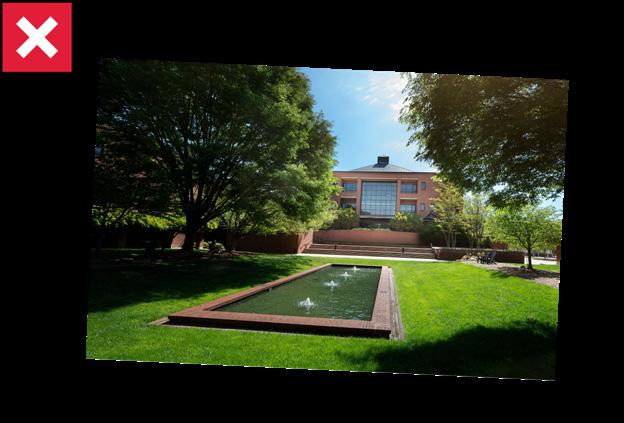

FTD Application Timeline
Nov. 1 | Application, Portfolio and Essay Due Application
• Submit a completed admissions application via one of the following methods:
• Common Application
• Coalition on Scoir Application
• NC State Transfer Application
• Select Fashion and Textile Design as your 1st choice major.
• Consider selecting a different Textiles major or Textiles Undeclared as your 2nd choice major.
SlideRoom
• Create an account in SlideRoom and upload your 10-piece portfolio and essay.
Portfolio
• All images should be in .jpg format.
• Each image can be up to 5 MB.
• Each image should have a minimum of 1,000 pixels in one direction.
• Additional instructions can be found in the What We Are Looking For and Image Guidelines sections.
Essay
• In SlideRoom, select the concentration you are interested in: Fashion Design OR Textile Design
• The essay question will ask you to reflect on your design aesthetic.
• Essays are limited to 500 words.
• Essays should be in one of these formats: .doc, .docx or .pdf.
• File Name should be Last Name, First Name - FTD Essay.
• Example: Smith, Jane - FTD Example.doc
Academically competitive applicants (as determined by the Office of Undergraduate Admissions) will have their portfolios reviewed by the department. Top applicants will be invited to Interview Day.
FTD Application Timeline
Late November | Interview Day Notifications
• Applicants who are invited to Interview Day will be notified by email.
• Invited applicants will be asked to register via the Interview Day Confirmation Form by the date specified in the email. This date varies year to year.

Early to Mid December | Interview Day
• Invited applicants who have registered will participate in Interview Day.
• Details of what to expect will be sent via email.
Faculty will make final recommendations and submit them to the Office of Undergraduate Admissions.

By or On Jan. 31 | Application Notification Decisions
• If you are offered admission to Fashion and Textile Design (FTD), you will be notified via wolfPAW which concentration (Fashion Design or Textile Design) you have been admitted to.
• If you are not offered admission to FTD, you may be:
• Recommended for admission to your second choice major.
• Recommended for admission to Fashion and Textile Management - Fashion Development and Product Management.
• Deferred to second choice major.
• Denied.

By May 1 | Enrollment Confirmation Due
• If you are offered admission and want to accept, confirm enrollment in wolfPAW.
What We Are Looking For
Types of Work
We often get questions about the types of work we expect to see. Our best answer is that we want to see your best work. If you have examples of multiple types of work, it is helpful to see that, but again, pick your best pieces to show us. You might have examples of any of the following:
• 3D work such as sewn garments or accessories, knitted or crocheted pieces, sculptures or ceramics.
• 2D work such as paintings, drawings, collages, printed pieces, mixed media, illustrations, woven fabrics or original textile prints.
Creativity and Originality
Include work that shows:
• Imagination in its conception and execution.
• Innovation and creative problem-solving.
• Expressive style.
Good Craft
Include work that shows:
• Attention to detail.
• The depth and breadth of your creative skills.
• High-quality images (see Image Guidelines section).
Visual and Written Communication Skills
Images:
• Choose images that effectively tell the story of your work (see Image Guidelines section).
• Use the image description to briefly tell us:
• The title of the piece (if applicable).
• What it is.
• Inspiration or subject.
• The materials or mediums used to make the piece.
• How you made it.
• How it relates to your creative vision or style.
• Any challenges you resolved or lessons you learned from this piece.
Essay:
• Make sure your essay is readable, understandable, grammatically correct and focused on responding to the provided prompt(s).
Image Guidelines
• Think about the main reason for including the work in your portfolio and then determine the best way to present it.
• Show attention to detail by adding close-up images to highlight your strongest work.
• If you overcame a challenge with the work, process images could be a good way to tell the story visually.
• The work should fill the space with minimal background and be the focal point.
In the examples below, the building is the “art”.
Images should be cropped and composed to make the art or design piece the focal point.


Images should be clear and high quality (see Tips for Taking Photos section):
• No pixelation.
• Good lighting.
• Color-accurate.
• Plain background without distractions.
If you would like to show process images or close-up details, you may include up to three supporting images of the same work in a collage, but you cannot collage multiple works into one set of images.
Tips for Taking Photos:




• Check the settings on your phone or camera. Make sure to choose the options that will yield the highest quality photos.
• Use a plain backdrop such as a white sheet or wall.
• Create a good lighting set-up with lights, lamps or natural light that will not cast shadows over the work (including your phone shadow!). You may need to move your set-up or select a different time of day to get the best light on your work.
• Angle the camera to show the clearest view of the piece. Position yourself closer to the piece rather than using the zoom feature on your phone or camera.
B.S. Fashion and Textile Design
Fashion Design Concentration
Textile Design Concentration




@ncstatewilson
NC State Wilson College of Textiles
@NCStateWilsonTextiles
@NCStateWilson
